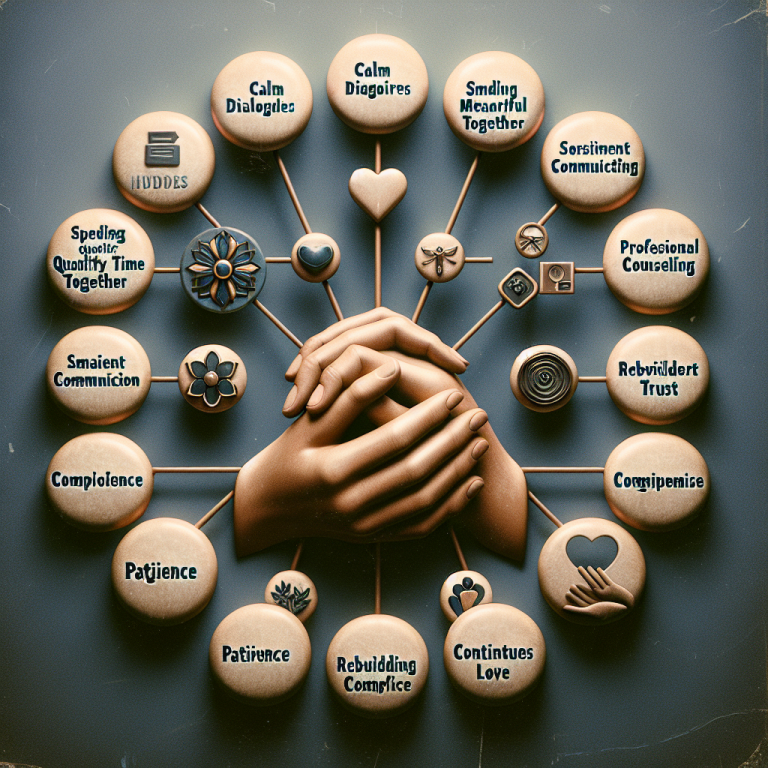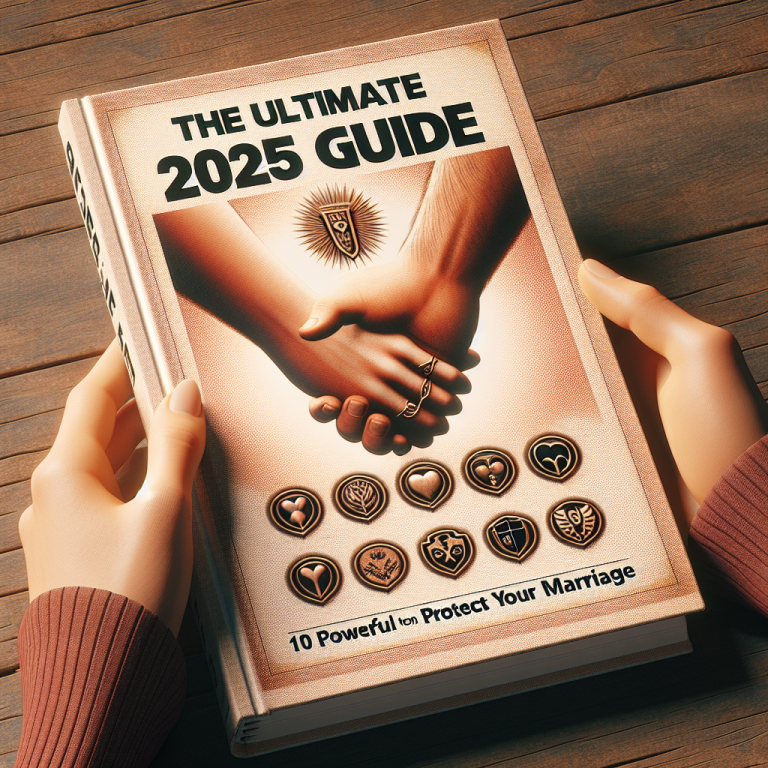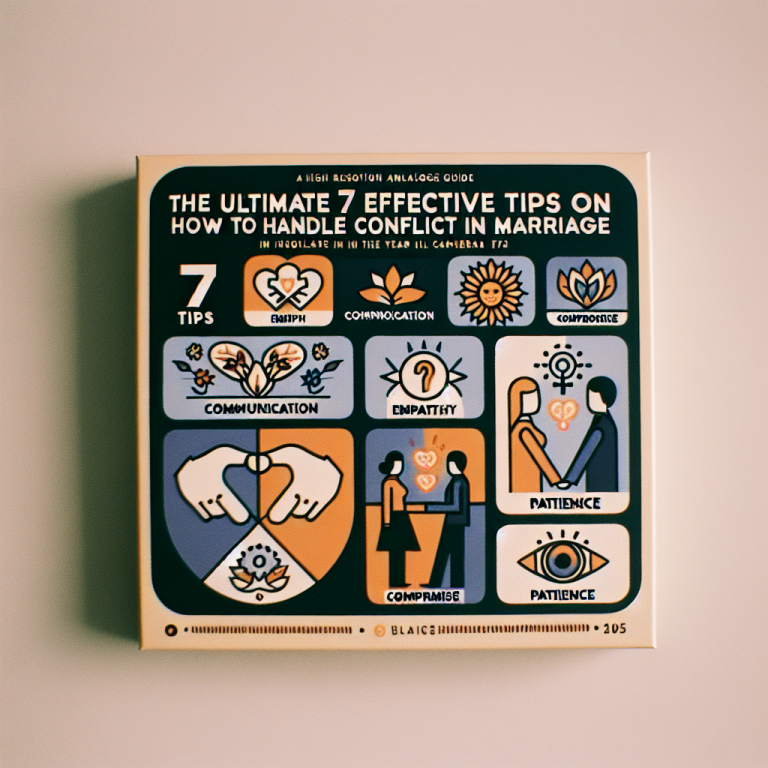How to break toxic communication cycles in your marriage
Recognize the Patterns
Identifying Toxic Behaviors
You know how sometimes it feels like you’re stuck in a loop with your partner? One day you’re laughing, and the next, you’re caught in some drama that feels oh-so-familiar. The first step to breaking those toxic communication cycles is recognizing those pesky patterns. Spend some time reflecting on your past conversations and identify what’s becoming a pattern.
Are you both quick to argue over trivial matters? That’s a red flag! Note down small disagreements that escalate—these clues can help you pinpoint what triggers these toxic exchanges. It’s like being a detective in your own relationship, looking for clues on how to make things better.
Once you’ve got a list of those behaviors, sit down with your spouse. Sharing this realization can often be the first step toward fixing it together. You’re both on the same team, after all, and recognizing these patterns is much easier when you do it as partners.
Understanding Emotional Reactions
Next up is figuring out why those toxic cycles keep happening. A lot of it boils down to our emotional reactions. Picture this: maybe you find yourself snapping at your partner because of a long day at work, they respond defensively, and before you know it, bam! You’ve fallen back into that toxic loop. Understanding not just your triggers but also theirs is crucial.
This involves some serious listening—both to yourself and your spouse. Try to dissect your emotions openly. Maybe express, “Hey, when you said that, it made me feel like…” This gives you both a chance to communicate your feelings without sounding accusatory.
Learning about emotional triggers can transform your interactions, leading to a space where both of you can express your feelings without fear of judgment. And let me tell you, that’s a game changer!
Being Honest with Yourself
Self-reflection is like holding up a mirror to your behavior. You’ve got to be honest with yourself about your role in these cycles too. Often, it’s easy to blame the other person—”If they’d just listen!” But when I started looking at my own actions, I realized I was contributing, maybe even unconsciously!
Take stock of how you communicate. Do you interrupt when your partner speaks? Or maybe you’re dismissive of their feelings? Recognizing these habits isn’t the easiest pill to swallow, but it’s totally necessary for growth.
Once you’ve identified your part, the next step is to vow to do better. Change starts with you, and when you commit to improving your communication, you’ll inspire your partner to do the same.
Create Healthy Communication Norms
Establish Clear Boundaries
So, establishing boundaries? Super important! Just like physical boundaries keep respect alive in a relationship, emotional boundaries do the same thing. What does that look like in real life? It means figuring out what topics are off-limits during heated discussions.
For me, that’s meant saying, “Hey, let’s not bring up past arguments; they’re not relevant now!” Setting these clear guidelines creates a safer space for conversations, making it less likely that we’ll revert to toxic habits.
Communicating these boundaries should be a two-way street. Make sure to discuss each other’s needs. You both deserve to feel heard and respected, right? That’s what makes moving forward together possible.
Practice Active Listening
Active listening is a skill that’s harder than it sounds! When our partner speaks, how often are we genuinely listening to what they’re saying instead of preparing our next response? I was guilty of this big time. But embracing active listening has changed the game for me.
To really practice it, I try to summarize what my partner has said before responding. This reflects that I’m tuned in and genuinely care about their perspective. How refreshing is it for both of us when we know we’re being heard, right?
It also helps avoid misunderstandings. A simple, “So you’re feeling upset because of XYZ?” can diffuse tension and steer conversations in a more constructive direction.
Choose Your Words Wisely
Word choice is everything in a relationship. It’s wild how the same thought can be expressed in ways that either uplift or hurt. In the thick of an argument, I realized I wasn’t being kind with my words, often leading to more escalations.
It’s a practice, but I’ve worked on using “I” statements instead of accusatory language. Saying, “I feel hurt when…” is way more effective than “You always XYZ.” The goal is to express feelings rather than place blame, creating an environment ripe for reconciliation.
And don’t shy away from compliments! Balancing constructive criticism with positive feedback can shift the dynamic of any conversation, allowing both partners to feel appreciated and valued.
Seek Professional Help if Needed
Recognize When to Get Help
There might come a point when you realize you’re just stuck. If the toxic cycles seem unbreakable, it’s absolutely okay to seek professional help. Getting a therapist involved isn’t a sign of weakness—it’s a commitment to fixing your relationship.
In my experience, discussing issues with a neutral third party can shed light on things I might be overlooking. They can help facilitate uncomfortable conversations that might seem impossible to navigate on your own.
Plus, a good therapist can provide tools specifically tailored to your relationship, addressing the unique dynamics you both have. That can be amazingly beneficial!
Choosing the Right Therapist
When considering therapy, take your time to choose the right fit. It’s super important! Not every therapist will be ideal for both partners, so have that discussion. Look for someone who specializes in couples therapy and is empathetic while not taking sides.
Ask around for recommendations or check online reviews. The connection you both feel with this person will have a profound impact on the process of healing.
And don’t be afraid to switch therapists if the first one doesn’t feel right. Your comfort matters, and finding that perfect match is key to progress.
Follow Up Regularly
One last thing—following up! After seeking help or making changes in your communication, it’s vital to check in regularly. This can mean scheduling monthly check-ins where you both discuss the state of the relationship honestly, evaluating how well you’re doing.
Regular discussions can help keep the lines open and reinforce the positive changes being made. Make it a date! Grab your favorite takeout, and make it a relaxed environment to talk about progress or any lingering issues.
Remember, relationships are a continuous journey, and checking in shows that you care about maintaining a healthy line of communication!
FAQ
1. What are signs of toxic communication in marriage?
Signs include frequent arguments over minor issues, constant criticism, unwillingness to listen, and emotional withdrawal. If these patterns persist, it may indicate a deeper issue.
2. How can we approach difficult conversations?
Choose a calm time for discussions, use “I” statements, and practice active listening. This creates a safe space for both partners to express their feelings.
3. Is professional help really necessary?
If you find that attempts to improve communication aren’t working, seeking professional help can provide new perspectives and tools tailored to your relationship.
4. How can we establish boundaries effectively?
It’s about open discussion! Talk about what topics or behaviors are off-limits during arguments and agree together, ensuring both partners feel respected.
5. Can communication styles change over time?
Absolutely! With effort and practice, you can both learn and adapt to new, healthier communication styles that foster understanding and respect.










